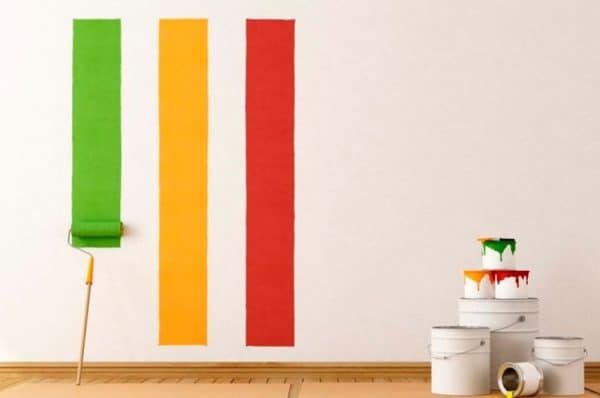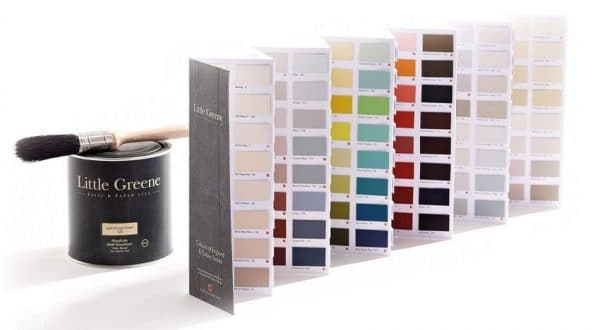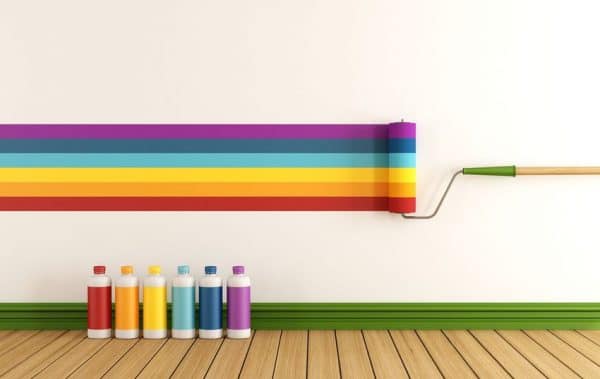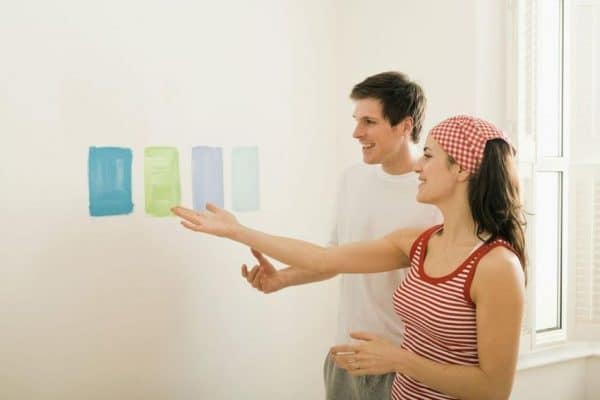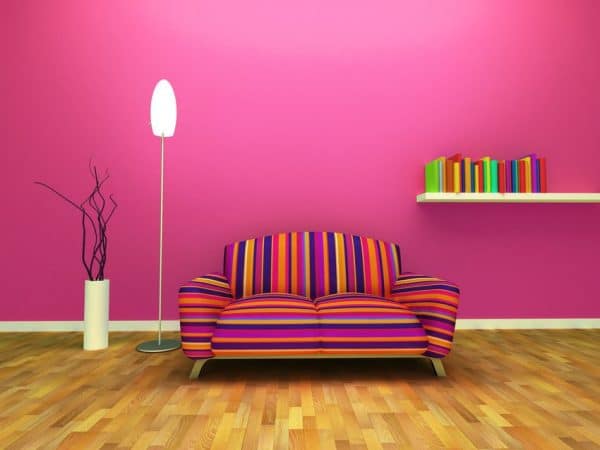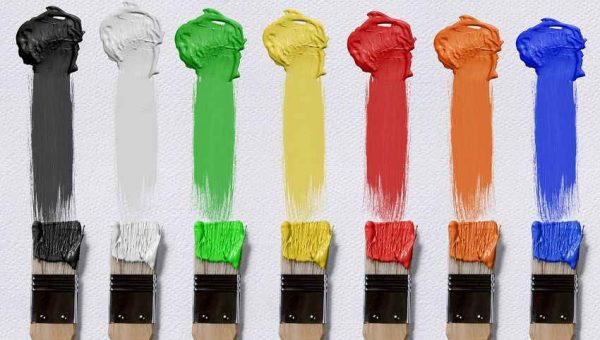To find the perfect color of the walls in the apartment, it turns out, is a whole art. Looking at the decorative paint in the store, it is difficult to imagine how this finish will look “live” in the interior. In addition, modern manufacturers of paints and varnishes produce wide product lines in all kinds of colors and shades. And at first glance, it seems that making a choice in favor of one of them is unrealistic.
- What are colors
- Why do we need colorings
- How to make a paint
- Painted in the layout of the shoe box
- How much will the cost of repairs repair?
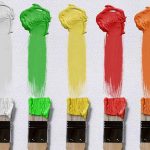
Great helpers in cases where you need to determine the color, will be painted. Let us consider in more detail what they are, what they are used for and how to make them correctly.
What are colors
These are paint samples demonstrating its color characteristics. Usually they are made on paper, cardboard, drywall or wooden surfaces. Samples will help not only to determine the tone of the color, but also to avoid surprises, because the color in the picture in the magazine can be very different from the final result on the wall.
Some companies offer customers a convenient service for the preparation of such samples in the form of painted sheets for an additional fee. But, if you wish, you can make probes on your own, having previously purchased mini-jars of your favorite paint in a specialized store and prepared the basis.
to contents ↑Why do we need colorings
Many companies provide ready-made fans with visual thumbnails of the produced color palette for free. But the difficulty lies in the fact that in a small area it is difficult to objectively evaluate the color, because in practice it will look completely different on surfaces of impressive dimensions. The planned color may actually be richer, lighter or, conversely, darker.
Often you can find a recommendation, according to which you need to buy paint 1 tone lighter than what you liked in the manufacturer's catalog.
to contents ↑Unfortunately, the advice is not universal, because individual factors such as glare from nearby houses of bright colors, the quality of artificial lighting indoors, additional lighting, floor and ceiling finishes, adjacent furniture, textiles, as well as the amount of light penetrating can play a role. from the windows.
How to make a paint
Expert opinions on how to make colorings properly come down to the following general recommendations:
- samples should be viewed only in the room for which decoration is selected;
- it is better to paint at the moment when the rest of the repair materials are prepared - wallpaper, tile, flooring, etc .;
- it is desirable to have at hand samples of not only materials, but also furniture upholstery;
- if possible, you need to evaluate the color in different parts of the room, under different weather conditions, time of day and lighting;
- it is not recommended to do such testing directly on the wall, since the layer of a new color may then not overlap the old one, and with multi-layer painting of the wallpaper there is a risk that they simply begin to peel off due to too much thickness;
- for a relief surface (for example, for a brick wall) it is better to apply paint directly to it, only it is necessary to remove dust and apply a primer first.
It is worth focusing on the following key stages of the manufacture of paints:
- Choose a color.Ideally, you need to pick a few (3-5) close shades.
- Purchase small sample jars. Each manufacturer produces samples of different volumes: from 100 ml (for designer products) to 1 liter (for simple brands).
- Paint on A4 or A3 paper, pre-fixed on a drywall sheet of the appropriate size. As an alternative to paper, you can choose smooth wallpaper for painting. Cover each blank with a special primer, and then proceed with painting. The number of layers and density can be adjusted depending on the desired brightness and juiciness of the color. On the flip side it will be convenient to sign which blank one or another paint belongs to. Each layer must be thoroughly dried. The advantage of this method is mobility: workpieces can be moved around the room and placed side by side for comparison. And then you do not have to plaster the walls again.
- Compare the results.
to contents ↑
Painted in the layout of the shoe box
The original idea to recreate the layout of the room and select the desired final color will be the use of shoe boxes. The idea is very simple - it should be painted in the selected shade and evaluate it under different lighting options. For clarity, you can cut out the “window”, with which it will be easier to understand how the colors on each wall look, taking into account the incidence of light rays.
to contents ↑How much will the cost of repairs repair?
The cost of such a process depends on a number of parameters, including:
- type and quality of interior paint;
- minimum volume of cans of the selected manufacturer;
- number of layers applied;
- number of shades to choose from;
- staining area.
In an effort to save money, do not choose the cheapest paint. It is much more difficult to “get into the tone” of inexpensive materials. In addition, coverage with a more expensive imported color will be noticeably denser and better, fewer layers will be required, which means lower consumption. Therefore, it is sometimes more profitable to purchase 10 liters of expensive supplies than 20 liters of budget.
Designer paints are often produced in small volumes of about 50-100 ml, which is usually enough for one painting. But some shades have to be tinted. In this case, the costs will be higher, since containers less than a liter are not used.
If you do not want to throw away a large can of paint and buy another one just because the wrong shade was chosen, be sure to do preliminary colorings. Although such tests are not a low-cost stage of repair, with them you can be sure that the result will be exactly the one that is expected. For painting, use primed plasterboard sheets and several tones of high-quality coloring material.

